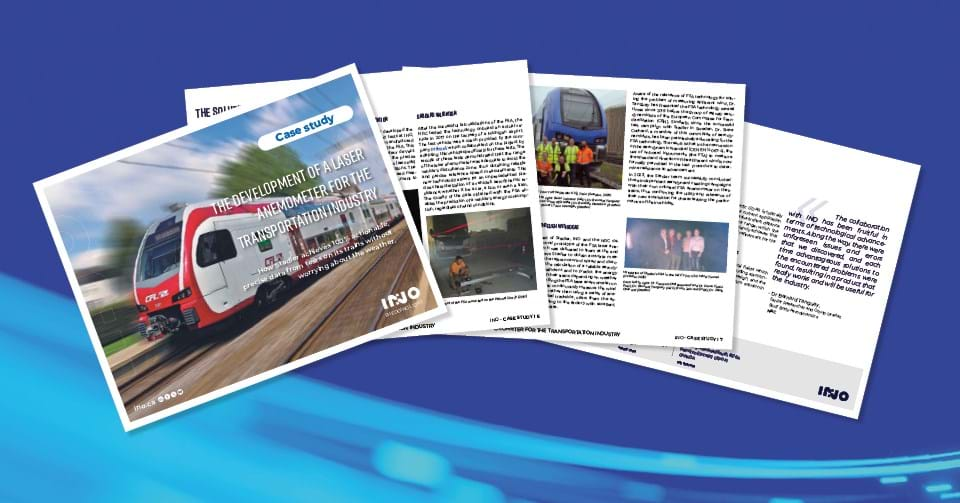The Development of a Laser Anemometer for the Transportation Industry
How INO and the NRC partnered with Stadler to help them achieve 100% actionable, precise data from tests on its trains without worrying about the weather.

How INO and the NRC partnered with Stadler to help them achieve 100% actionable, precise data from tests on its trains without worrying about the weather.
One of the major challenges in railway aerodynamics is to define aerodynamic drag, a force that constitutes the major contribution to the resistance to the movement of a high-speed or intercity train.
To do so, railway equipment manufacturers must submit their trains to a series of tests to quantify their resistance to motion and their energy consumption. Organizing these tests under real conditions is both costly and complex with stringent requirements including having a test train available, a team to carry out the test campaign, locate test tracks, and more.
The collaboration between the NRC and INO was quite exceptional... we first had a meeting here at INO where we presented the problem to a local team to exchange ideas, and hear what INO had to propose as a solution to the problem. From the start, this meeting was very revealing of INO’s interest in supporting us and of all the expertise INO has in finding a solution to this problem.
Financially, it’s extremely beneficial for us as it allows us to conduct these tests being sure to return to the factory with data, which was not necessarily the case before!
Discover how Stadler partnered with INO and National Research Council of Canada (NRC) to develop a practical and effective solution for conducting precise aerodynamic measurements on board vehicles. By reading this case study you will learn more about:
